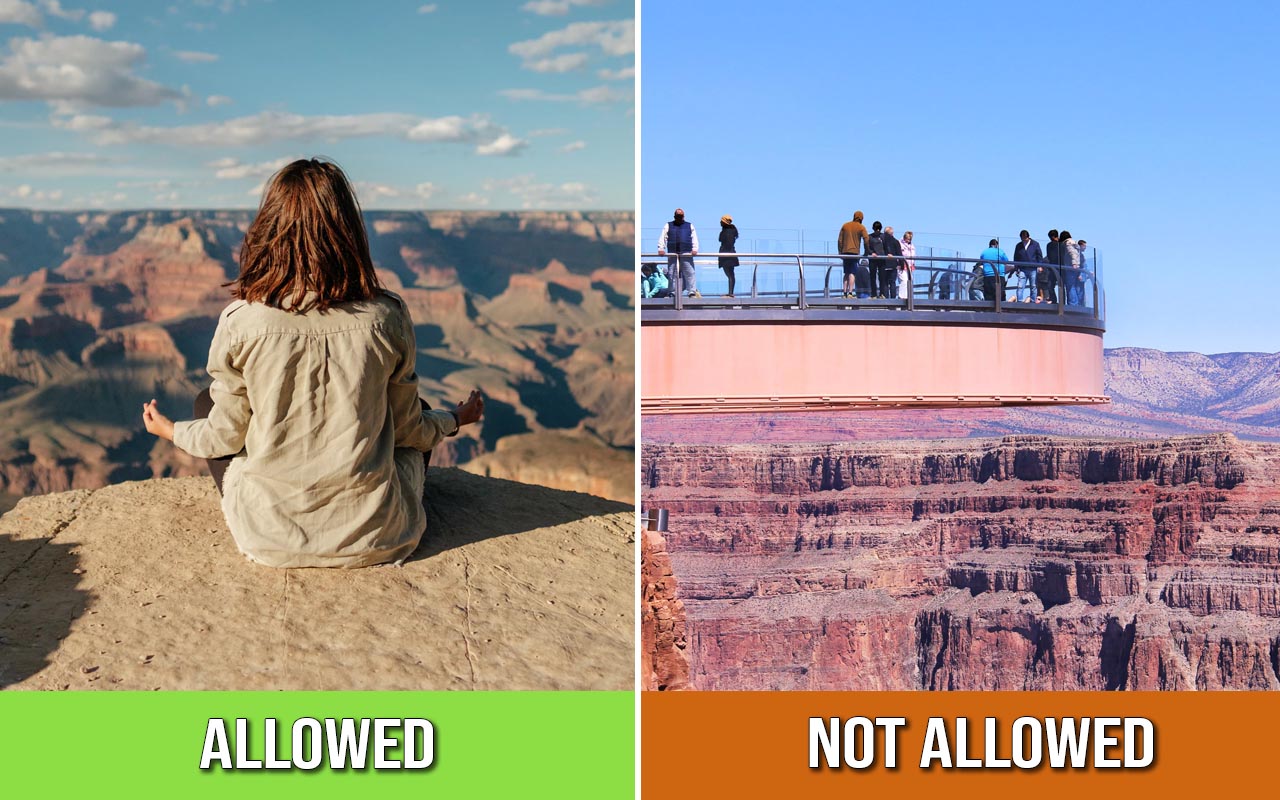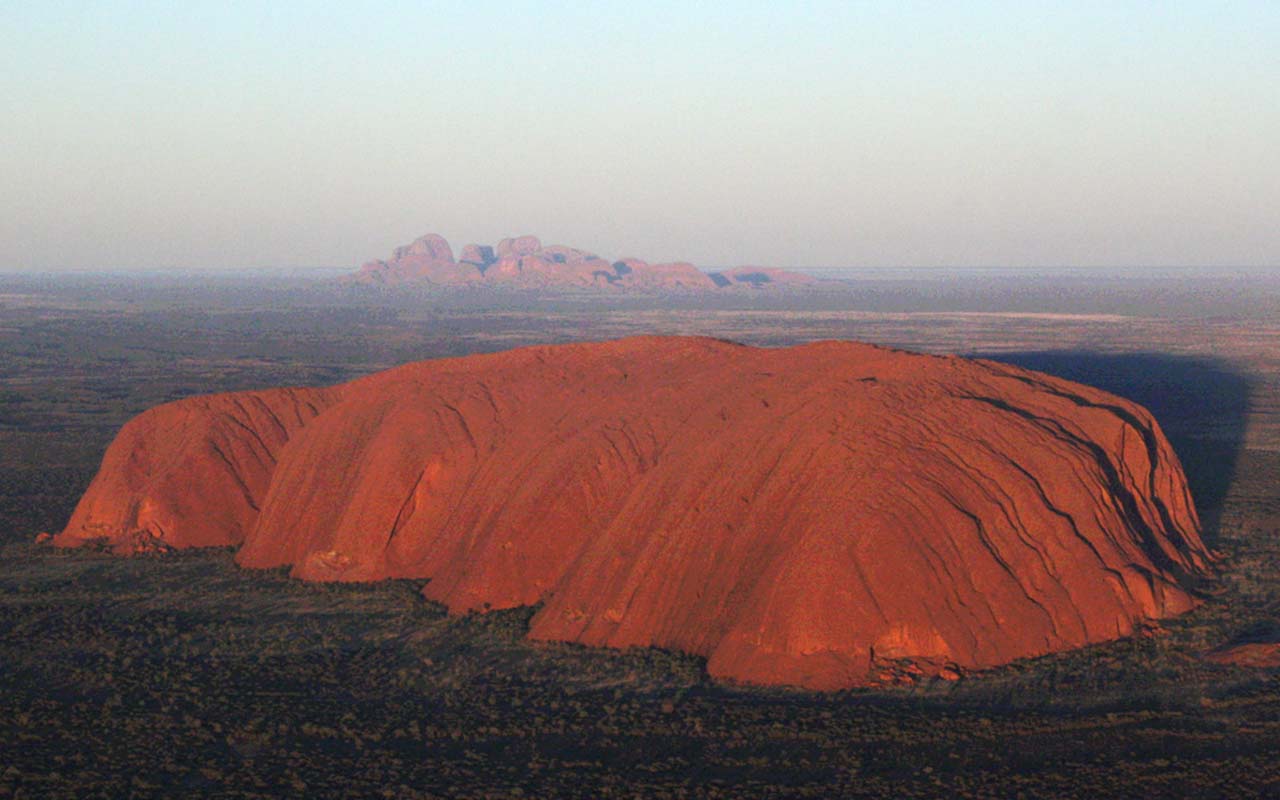Since the era of smartphones, taking pictures and sharing them on social media has never been easier. It is estimated that humanity takes more than 14 trillion photos annually, and every two minutes, humans take more photos than within the past 150 years combined. Cheap airfare and hotels also make it easier for people to travel around the globe and witness some of the most beautiful manmade pieces of art to ever exist. With the rise in technology and the ease in availability, however, privacy becomes a huge concern. While all of the Earth is to be admired and photographed, there are certain tourist destinations where you are not allowed to take pictures.
Some places allow tourists to carry cameras with them but taking pictures is forbidden. Meanwhile in other places, you are not even allowed to bring a camera with you. Without further ado, here are 10 popular tourist destinations where you are not allowed to take pictures.
1. Taj Mahal

The Taj Mahal in India is considered as one of the most beautiful—and romantic—buildings in the world. Located in Agra, the magnificent structure was constructed between 1632 and 1653, at the behest of Shah Jahan, the fifth Mughal emperor. In order to create the Taj Mahal, architect Lahauri led a team of 20,000 artisans and thousands of elephants, who took part in its development for more than two decades. As one of the world’s most recognizable wonders, it has millions of pictures taken by tourists from all over the world. However, photographs of the inside of the structure are limited and rarely seen.
This is because the department that is tasked with the conservation of the Taj Mahal, forbids anyone from taking pictures within the structure. Visitors who wish to enter must either turn off their cell phones or put them on silent modes. According to the official website of the Taj Mahal, this is not only a security measure, but also so that visitors can cherish the beautiful carvings and marble structures without disturbing others. (source)
2. Eiffel Tower

Located on the Champ de Mars in Paris, France, the Eiffel Tower is one of the most well known structures in the world. Originally built as the entrance arch for the World’s Fair in 1889, it was named after Gustave Eiffel, whose company was in charge of the project. Standing 320 meters (1050 feet) high, the Eiffel Tower was the tallest man made structure in the world for 41 years before being surpassed by the Chrysler Building in New York. The structure, made of iron, weighs around 10,000 tons and is wind resistant.
While millions of people visit the Eiffel Tower every year and photograph the beautiful monument, there’s something that many are not aware of. According to the official website of the Eiffel Tower, tourists are allowed to take images of the structure, day or night, and use it for personal use. However, if anyone intends to take an image of the structure at night, for recreational use, then they need to obtain special permissions. This is because the nighttime illumination (golden illumination, twinkling, beacon and events lighting) is considered a work of art and requires special authorizations as well as licensing fees. So, as long as you are non-professional photographer, you are allowed to take breathtaking images of the Eiffel Tower, day or night. (source)
3. Grand Canyon

Every year, more than 6 million people visit Grand Canyon National Park. First established as Grand Canyon National Monument by Theodore Roosevelt in 1908, it is often considered by many as one of the seven wonders of the natural world. Stretching 277 miles (446 kms) in length and 18 miles wide, the Grand Canyon is around 6,000 (1,800 meters) feet deep. Tourists often go on hikes, camping and to view the canyon’s fantastic view from the observation deck.
While commercial photography is generally restricted inside the canyon, visitors are allowed to take pictures for personal use, except in the observation desk. The park administration prohibits visitors from carrying cameras or phones in the deck, not only to ensure their safety, but to also limit disruption to other visitors. Special shoe covers are also required when entering the observation desk, to protect the glass from scuff marks. (source)
4. Kumsusan Palace of the Sun

The former palace was Kim II Sung’s official residence until Kim Jung Il decided to convert it into a mausoleum for his father and himself. The Kumsusan Palace of the Sun is considered a sacred site in North Korea and citizens as well as visitors are expected to show utmost respect when they are near it. The giant structure is heavily guarded and tourists can only visit the palace during the official governmental tour. Those who are granted permission to visit have to follow certain rules, such as bowing numerous times at all sides of both leaders. Photography is also strictly forbidden inside the palace, as well as speaking to other tourists while the tour is going on. The entrance is also equipped with a giant machine that is sort of like a hair dryer, which blasts dust and other particles off of visitors before entering. (source)
5. Neuschwanstein Castle

Neuschwanstein Castle is perhaps Germany’s most easily recognizable tourist attraction. Often known as Disney castle or Germany’s fairy tale castle, the construction of the castle began in 1869, and took three years to be completed. King Ludwig II wanted the structure to be completed within a limited period, which forced the workers to take part in the construction process day and night. Walt Disney was so inspired by its fairytale architecture, that he used the Neuschwanstein design to create Cinderella’s castle in the 1950 cartoon film. Photography is prohibited inside the castle and visitors can only view the inside during the 35-minute-tour with a guide. In order to take pictures or videos from within the castle, prior written permission is required and fees are to be paid. (source)
6. Westminster Abbey

The Westminster Abbey, London church, is a place where ceremonies of national significance takes place. Located west of the Houses of Parliament in the Greater London borough of Westminster, more than 1.5 million people travel from all over the world to witness its beauty. The Westminster Abbey, one of the United Kingdom’s most iconic churches in the heart of London, is also working to preserve the interior works of art in their purest form. One of the necessary steps taken by the conservation department is limiting the use of cameras inside the premises.
Photography is strictly forbidden inside the Westminster Abbey and those who wish to have pictures for personal or commercial use can obtain them for free from the official website. The officials believe that with the rise in photography comes distraction and also diminishes the intimate atmosphere of the building. (source)
7. Uluru and Kata – Tjuta National Park

The Uluru and Kata – Tjuta National Park is one of Australia’s most visited National Parks. Established in 1977, it was originally called Uluru National Park, but its name was changed to Uluru-Kata Tjuta National Park. In 1987, the Uluru-Kata Tjuta National Park was declared a UNESCO World Heritage Site. More than half a million people visit the National Park every year to connect with nature. While photography in general is allowed within the National Park, there are certain sites that are considered protected. Photography is strictly forbidden within these sensitive sites. Since such sites are considered holy by the Anangu tribal culture, even drawings of the sites are forbidden. (source)
8. Valley of the Kings

The Valley of Kings, in Luxor, Egypt, is a famous tourist destination where photography is strictly forbidden. Since the monuments and artifacts are centuries old, camera flashes can cause irreversible damage. Those who wish to visit have to keep the cameras outside or as far away from the site as possible. Anyone caught with a camera near the premises will be fined E£2,000 (US$115) or have their camera confiscated. (source)
9. Jiangsu National Security Education Museum

The Jiangsu National Security Education Museum in China consists of thousands of spy gadgets, hollowed-out coins used to conceal documents and maps disguised as a deck of cards. In order to protect the gadgets inside, photography is strictly forbidden and so are foreigners. In 2009, the Jiangsu National Security Education Museum in the eastern city of Nanjing came forward with a new law that forbids foreigners. However, Chinese citizens are allowed inside to view the contents of the museum. (source)
10. Golden District, Tokyo

Right in the heart of Tokyo’s Shinjuku district, the Golden District area is a relic from old Tokyo and is a great place to experience a traditional Tokyo night out. Filled with small restaurants that are capable of seating less than 6 people each, photography is strictly forbidden in the alleyways. In fact, buildings are so cramped together that some alleyways are no wider than a person. Due to the amount of forbidden activities taking place in the Golden District, photography is forbidden by the locals. Those caught taking pictures will have to leave their camera’s behind in order to leave the premises. (source)




